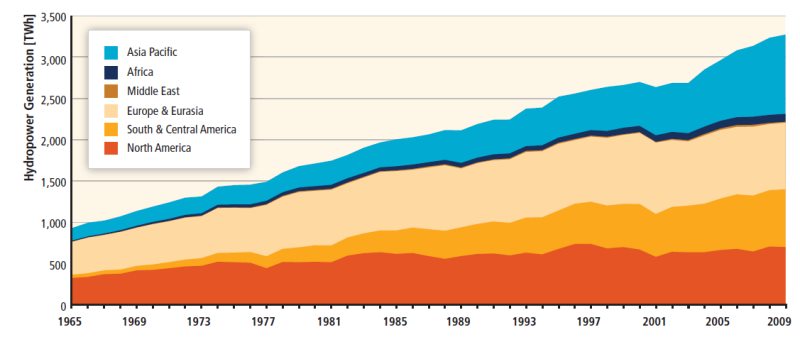Hydropower, or hydroelectric power, is one of the oldest and largest sources of renewable energy, which uses the natural flow of moving water to generate electricity. Hydropower currently accounts for nearly 27% of total U.S. utility-scale renewable electricity generation and 5.7% of total U.S. utility-scale electricity generation.
While most people might associate the energy source with the Hoover Dam—a huge facility harnessing the power of an entire river behind its wall— hydropower facilities come in all size Some may be very large, but they can be tiny, too, taking advantages of water flows in municipal water facilities or irrigation ditches. They can even be “damless,” with diversions or run-of-river facilities that channel part of a stream through a powerhouse before the water rejoins the main river. Whatever the method, hydropower is much easier to obtain and more widely used than most people realize. In fact, all but two states (Delaware and Mississippi) use hydropower for electricity, some more than others. For example, in 2020 about 66% of the state of Washington’s electricity came from hydropower.
In a study led by the National Renewable Energy Laboratory on hydropower flexibility, preliminary analysis found that the firm capacity associated with U.S. hydropower’s flexibility is estimated to be over 24 GW. To replace this capability with storage would require the buildout of 24 GW of 10-hour storage—more than all the existing storage in the United States today. Additionally, in terms of integrating wind and solar, the flexibility presented in existing U.S. hydropower facilities could help bring up to 137 gigawatts of new wind and solar online by 2035.
Hydropower is energy in moving water
People have a long history of using the force of water flowing in streams and rivers to produce mechanical energy. Hydropower was one of the first sources of energy used for electricity generation, and until 2019, hydropower was the leading source of total annual U.S. renewable electricity generation.
In 2022, hydroelectricity accounted for about 6.2% of total U.S. utility-scale1 electricity generation and 28.7% of total utility-scale renewable electricity generation. Hydroelectricity generation varies annually, and it's share of total U.S. electricity generation generally decreased from the 1950's through 2020, mainly because of increases in electricity generation from other sources. Hydroelectricity's percentage share of total annual U.S. electricity generation in 2001 through 2022 averaged about 6.7%.
Hydropower relies on the water cycle
Understanding the water cycle is important to understanding hydropower. The water cycle has three steps:
- Solar energy heats water on the surface of rivers, lakes, and oceans, which causes the water to evaporate.
- Water vapor condenses into clouds and falls as precipitation—rain and snow.
- Precipitation collects in streams and rivers, which empty into oceans and lakes, where it evaporates and begins the cycle again.
The amount of precipitation that drains into rivers and streams in a geographic area determines the amount of water available for producing hydropower. Seasonal variations in precipitation and long-term changes in precipitation patterns, such as droughts, can have significant effects on the availability of hydropower production.

|
|
 |
REFERENCES :
https://www.eia.gov/energyexplained/hydropower/
https://education.nationalgeographic.org/resource/hydroelectric-energy/
https://www.energy.gov/eere/water/hydropower-basics
Webmaster : Weeraphong Ruangchoote M.5/5 Number 17
